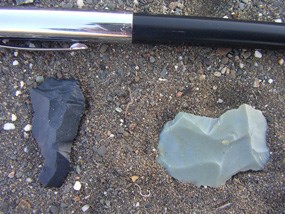
Protecting Historic Sites & Artifacts It's exciting to hold a little piece of the past in your hand - to know that you have some connection with those who came before. The belongings, living quarters, and material objects of these people survive today as archeological sites. An archeological site can be anything from an isolated artifact lying on the surface of the ground, to a village site covering a large area. Archeology represents our heritage and it is therefore fascinating to many people. Most artifacts themselves tell us relatively little about past cultures. Of more importance is the association or context. This refers to its location or placement in relation to other evidence. If a site has been disturbed by erosion, vandalism, or looting, much of the context is gone forever. If you encounter historic cabins, debris from the mining era, or artifacts from native peoples, please leave them as your found them so that other visitors might also enjoy the same sense of discovery and history that you enjoyed. Removal of artifacts and destruction or vandalism to the structures themselves is illegal. Please leave all artifacts where you found them. What may appear to be "trash" from another era may be an important part of the story of the place. The Archeological Resources Protection Act (ARPA) of 1979 makes it illegal to:
It is a felony if violations to the law result in damage to a site or trade in artifacts in excess of $500. Penalties:
|
Last updated: April 14, 2015
